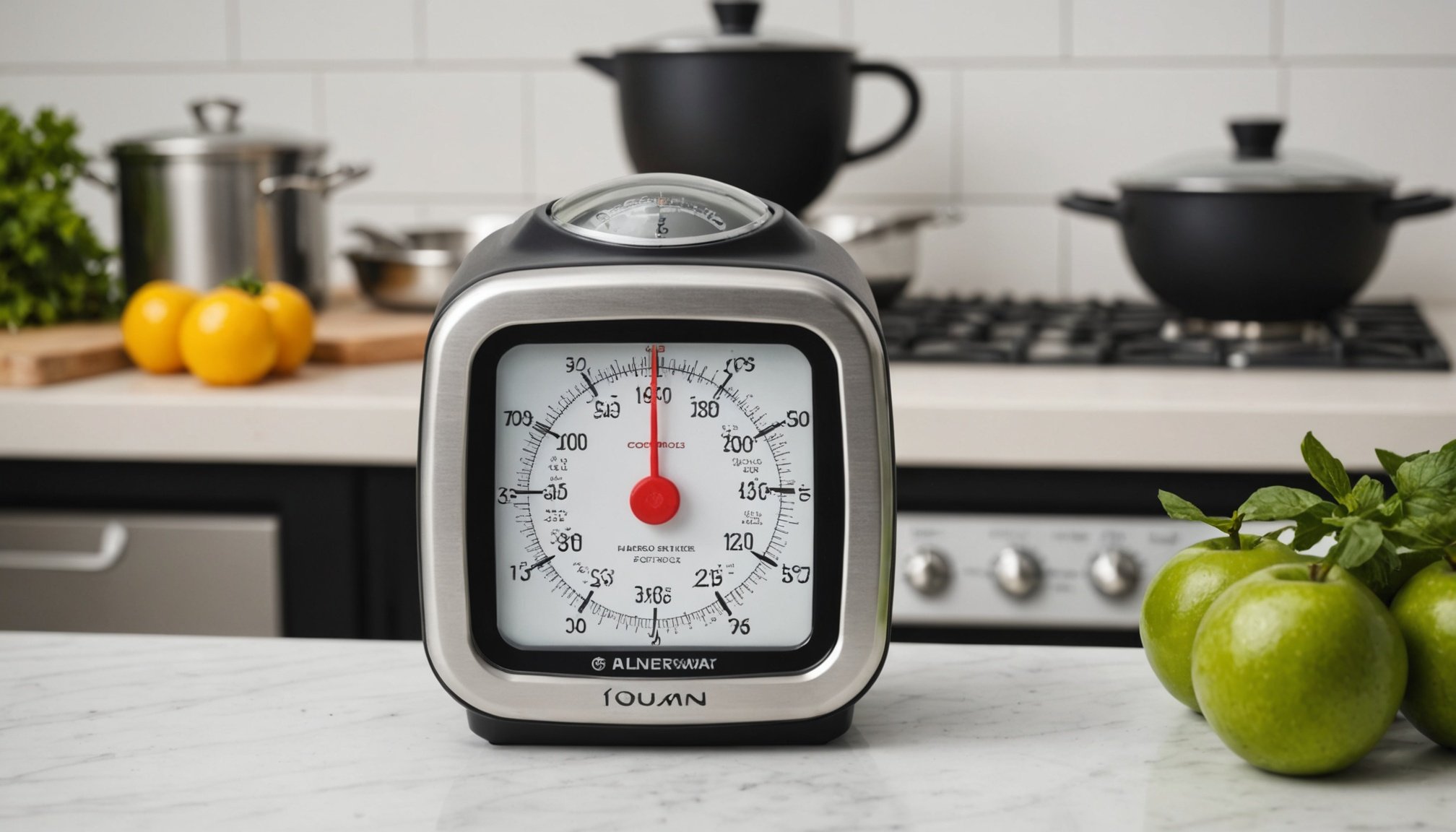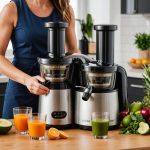Mastering Time: Your Guide to Selecting a User-Friendly and Precise Kitchen Timer
When it comes to cooking, managing your time effectively is crucial for achieving perfect dishes and maintaining a stress-free kitchen environment. A good kitchen timer is more than just a tool; it's a key component in your time management arsenal. Here’s a comprehensive guide to help you select the best kitchen timer for your needs, ensuring your cooking, work, and overall productivity are optimized.
Understanding Your Needs
Before diving into the world of kitchen timers, it's essential to understand what you need from your timer. Here are a few questions to consider:
This might interest you : Maximize Energy Savings: Best Strategies for Using Your Dishwasher During Peak Hours
What You Will Use It For
- Are you looking for a timer specifically for cooking, or do you need something versatile that can be used for other tasks like work, study, or exercise?
- Do you prefer a digital or analog timer?
Ease of Use
- How important is ease of use to you? Do you want a timer with a simple interface or one with advanced features?
- Are you comfortable with setting times using buttons, dials, or perhaps a mobile app?
Additional Features
- Do you need features like multiple timers, countdown and count-up functions, or alarm settings?
- Is energy efficiency a consideration, especially if you plan to use the timer frequently?
Types of Kitchen Timers
Digital Kitchen Timers
Digital kitchen timers are popular for their precision and ease of use. Here are some key features to look for:
Ease of Setting Time
- Look for timers with intuitive interfaces. For example, the JOYHILL Revolutionary Digital Kitchen Timer allows you to set time by rotating a dial, which can be more user-friendly than pressing multiple buttons.
Display and Readability
- A clear and large LED display is crucial. The JOYHILL timer, for instance, features a 3-inch LED display that is easy to read at a glance.
Additional Features
- Some digital timers come with multiple volume levels for the alarm, which can be useful depending on your environment. The JOYHILL timer offers three volume levels, including a mute option.
Analog Kitchen Timers
Analog timers, while less common, still have their place in many kitchens. Here are some points to consider:
Also read : Mastering the Art of Cheese Boards: A Guide to Selecting the Perfect Board for Your Next Gathering
Simplicity
- Analog timers are often very simple to use, with a straightforward dial to set the time.
- However, they may lack the precision of digital timers and can be less versatile.
Aesthetic Appeal
- Analog timers can add a nostalgic touch to your kitchen and may be preferred by those who like a more traditional look.
Key Features to Look For
When selecting a kitchen timer, here are some key features to consider:
Quick and Easy Time Setting
- A timer that allows you to set time quickly is essential. Look for timers with one-key control or rotary adjustments.
Clear Display
- A clear and easy-to-read display is vital. Ensure the timer has a large enough display and adequate backlighting for visibility in different lighting conditions.
Multiple Timers and Alarm Settings
- If you often cook multiple dishes at once, a timer that allows you to set multiple times can be very useful.
- Adjustable alarm volumes or silent modes can also be beneficial, especially if you're using the timer in different environments.
Energy Efficiency
- If you plan to use the timer frequently, look for energy-efficient options. The JOYHILL timer, for example, has an ECO mode that dims the screen after 5 seconds to conserve energy.
Comparing Popular Kitchen Timers
Here is a comparison of some popular kitchen timers based on key features:
| Timer Model | Ease of Use | Display | Additional Features | Energy Efficiency |
|---|---|---|---|---|
| JOYHILL Revolutionary Digital Kitchen Timer | Rotary dial for easy setting | 3-inch LED display | Multiple volume levels, count-up and countdown | ECO mode to conserve energy |
| ThermoWorks TimeStick Trio | Simple button interface | Large LCD display | Multiple timers, magnetic back | Battery-powered, long battery life |
| Cuisinart CTG-00-CNT | One-touch operation | Clear LCD display | Count-up and countdown, adjustable volume | Battery-powered, no specific energy-saving features |
User Reviews and Feedback
Understanding what other users think about a product can be incredibly valuable. Here are some insights from verified purchases:
Positive Feedback
- "I am very happy to have found this timer. It's easy to set a time and has a nice, loud bell when it goes off." – Verified Purchase
- "The magnetic grip is wonderful, and it stands up nicely. It has good volume levels and is easy to use." – Verified Purchase
Negative Feedback
- "It takes some getting used to, but once you get it, this timer is wonderful. However, it can be difficult to get it to the correct time sometimes." – Verified Purchase
- "The backlight is incredibly dim, and the numbers are hard to read in normal lighting." – Verified Purchase
Integrating Time Management Techniques
While a good kitchen timer is essential, it's also important to integrate effective time management techniques into your daily routine.
Pomodoro Technique
This technique involves working in focused 25-minute increments, followed by a 5-minute break. It can be applied not just to your work but also to your cooking tasks. For example, you can set your timer for 25 minutes to focus on a specific cooking task without any distractions.
Time Blocking
Time blocking involves scheduling specific blocks of time for different tasks. This can help you manage your cooking time more efficiently. For instance, you can block off two hours in the morning for meal preparation and another hour in the evening for cooking.
Practical Tips for Using Your Kitchen Timer
Here are some practical tips to get the most out of your kitchen timer:
- Set Multiple Timers: If you're cooking multiple dishes, use a timer that allows you to set multiple times. This will help you keep track of each dish without confusion.
- Use the Pomodoro Technique: Apply the Pomodoro technique to your cooking tasks to stay focused and avoid multitasking.
- Keep It Visible: Ensure your timer is placed in a visible location so you can easily see the time without having to leave your cooking station.
- Adjust Alarm Volumes: Use the adjustable volume feature to set the alarm to a level that works best for your environment.
Selecting the right kitchen timer is not just about finding a tool; it's about enhancing your productivity and ensuring that your cooking tasks are managed efficiently. By understanding your needs, comparing different models, and integrating effective time management techniques, you can master the art of using your time wisely in the kitchen.
Whether you're a professional chef or a home cook, the right kitchen timer can make a significant difference in your cooking experience. So, take the time to choose a timer that fits your needs, and watch how it transforms your cooking routine, making every day a more productive and enjoyable one.











